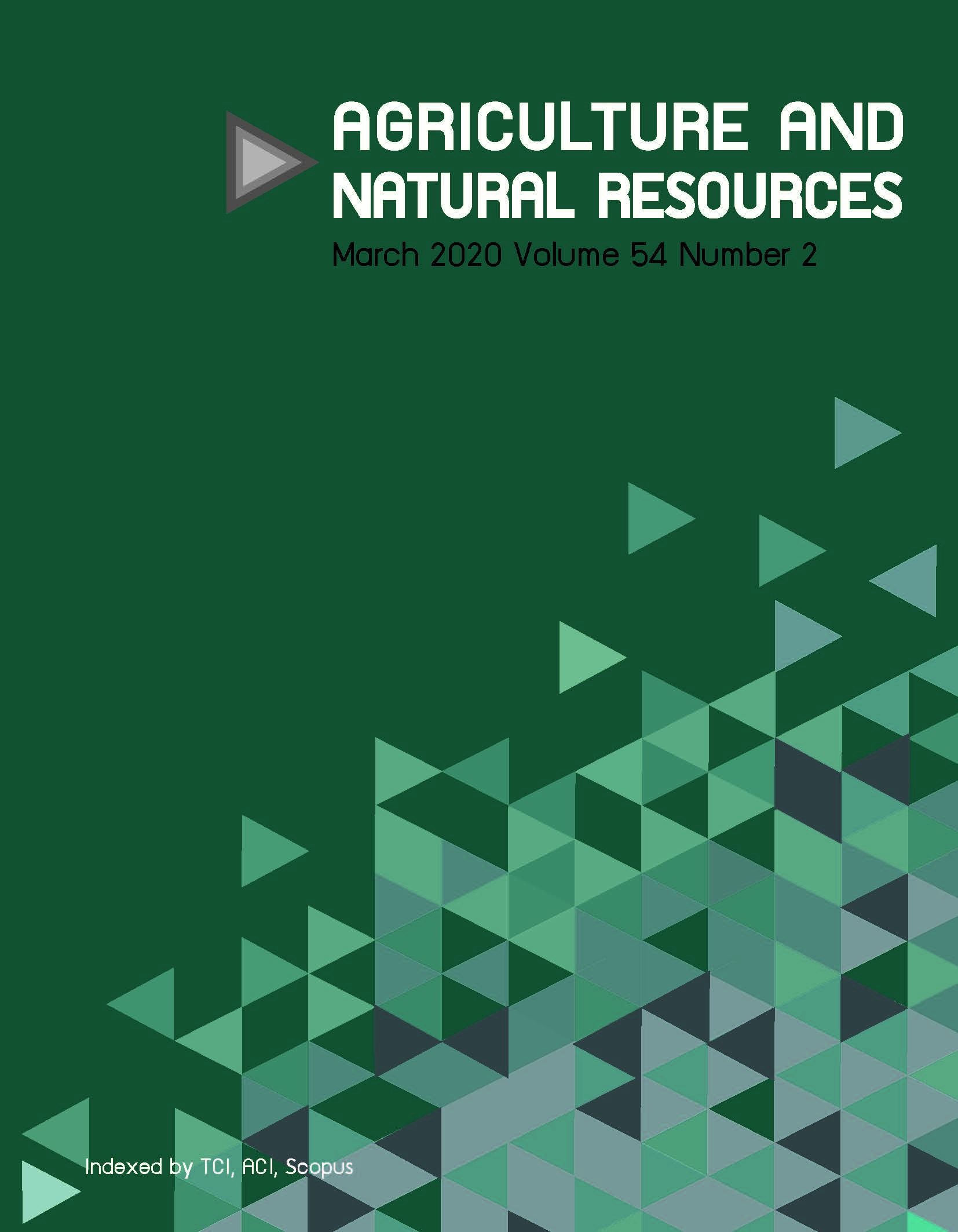A novel, virus-like double-stranded RNA in Phytopythium cucurbitacearum isolated from para rubber tree (Hevea brasiliensis) in eastern Thailand
Keywords:
dsRNA, Hymexazol, Para rubber tree, Phytopythium cucurbitacearum, VirusAbstract
Members of the order Peronosporales, especially Phytophthora, Phytopythium and Pythium, are notorious plant pathogens. A virus associated with the oomycetes from the para rubber tree has not been reported to date. In this report, rubber tree petioles with symptoms of abnormal leaf fall from eastern Thailand were isolated for oomycetes that were then screened for virus-like, double-stranded RNA using cellulose column chromatography. From 79 isolates, only isolate R84 contained three dsRNA segments with approximately 8.0, 3.7 and 2.3 kilobases. This was further confirmed by their ionic-strength-dependent sensitivity to hydrolysis using RNase A. Two-step reverse transcription using available Phytophthora virus-specific primers revealed that the dsRNA segments were not any of the currently reported Phytophthora viruses. Isolate R84 was described as: homothallic and having plerotic oogonia and paragynous antheridia; zoosporangia usually spherical, or occasionally ovoid, pyriform, with or without papilla; zoosporangia germinate by extension of the exit tube, vesicle formation and zoospore discharge. Phylogenetic analysis based on sequences of the internal transcribed spacer rDNA region of the isolate and those from other Phytopythium (Phy.; previously Pythium in clade K) from GenBank showed that the most closely related species was Phytopythium cucurbitacearum. Detached leaf assay showed that zoospores could infect both young and mature leaves. The growth rate, sexual and asexual reproduction, hymexazol resistance and leaf infection of isolate R84 suggested that the virus-like dsRNA infection was in a symptomless manner. This was the first report of dsRNA elements in Phy. cucurbitacearum and of Phy. cucurbitacearum on para rubber trees.
Downloads
Published
How to Cite
Issue
Section
License
Copyright (c) 2020 Kasetsart University

This work is licensed under a Creative Commons Attribution-NonCommercial-NoDerivatives 4.0 International License.
online 2452-316X print 2468-1458/Copyright © 2022. This is an open access article under the CC BY-NC-ND license (http://creativecommons.org/licenses/by-nc-nd/4.0/),
production and hosting by Kasetsart University of Research and Development Institute on behalf of Kasetsart University.







